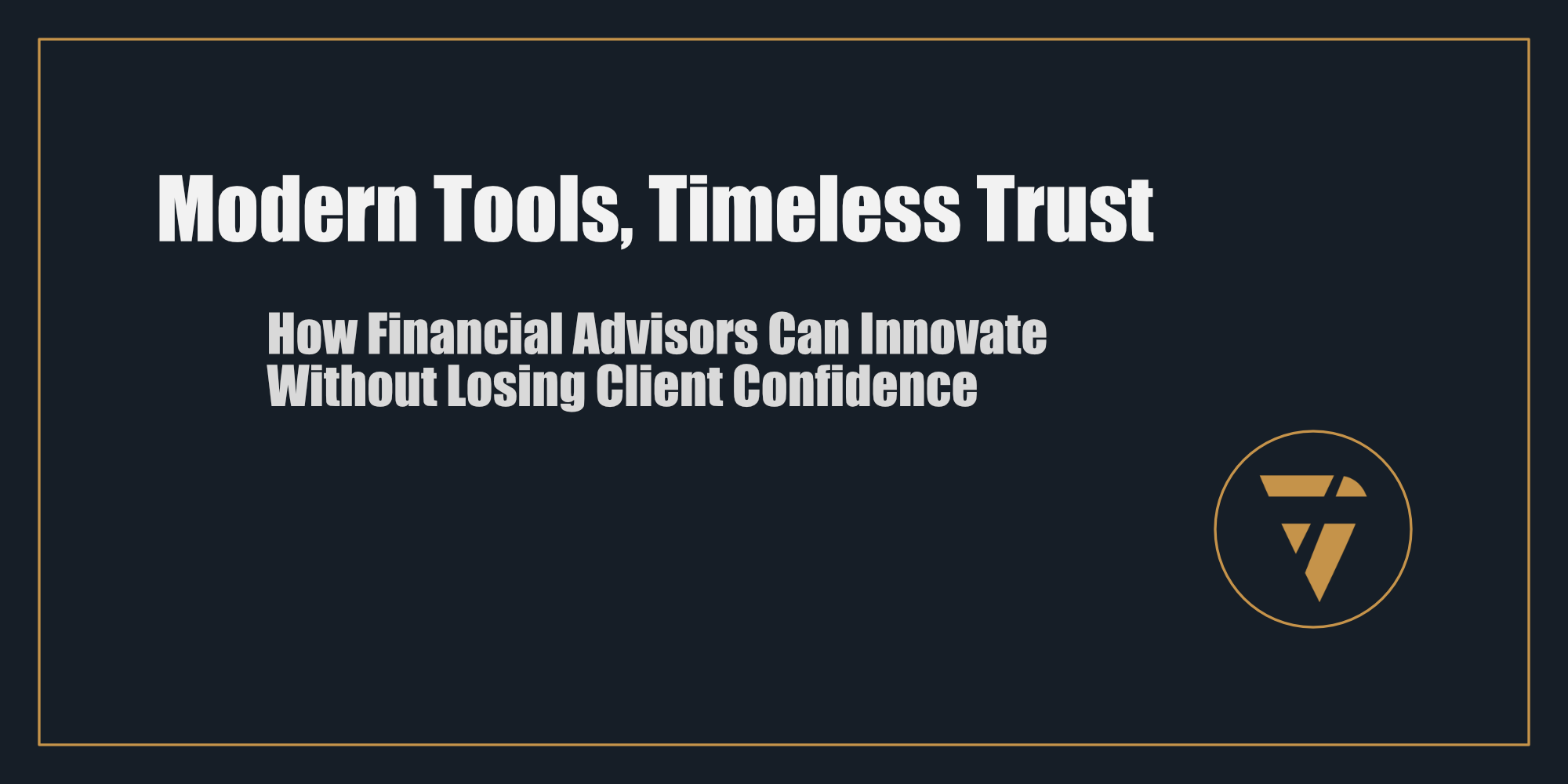Modern Tools, Timeless Trust
How Financial Advisors Can Innovate Without Losing Client Confidence

What if the very tools meant to enhance your practice could also erode its foundation?
As financial advisors, you’re not just managing portfolios—you’re managing relationships, trust, and futures. Every handshake, phone call, and late-night email forms the bedrock of a connection that clients value deeply. But today, the rise of digital tools—from robo-advisors to AI-powered analytics—is changing the game.
Clients want transparency. They want access. They want speed. But they also want you.
The challenge? Balancing the adoption of modern innovations with the timeless trust that defines your practice. Technology isn’t going away, and neither is your client’s need for personal, human connection. So how do you harmonize the two?
The Dilemma: Innovation vs. Connection
Picture this: A long-term client—an executive in her 50s—sits across from you, scrolling through an app that tracks her investments. She loves the instant updates but admits, “I still don’t trust these algorithms. That’s why I need you.”
Now imagine a new client, a 32-year-old entrepreneur, who insists on an all-digital experience. She values convenience and expects you to match the tech-savvy options she’s seen elsewhere.
How do you serve both effectively?
Here’s the truth: Trust and technology don’t have to be opposing forces. When implemented thoughtfully, innovation can amplify trust, not diminish it.
The Client-First Approach to Technology
1. Start with Empathy, Not Efficiency
Your clients don’t just want technology—they want solutions. Before adopting any tool, ask:
- How does this improve my client’s experience?
- Does it solve their unique challenges or create new ones?
For example, an automated portfolio update can provide clarity and transparency for one client but overwhelm another. Tailor your approach based on their preferences.
2. Choose Tools That Enhance Transparency
Clients value advisors who make the complex understandable. Tools like interactive dashboards or secure client portals don’t just streamline processes—they create clarity. When clients can visualize their financial trajectory, they feel empowered and informed.
3. Use Automation to Free Up Time for Personalization
Adopting CRM tools or email automation doesn’t mean replacing personal touch—it’s about optimizing your time for meaningful conversations. When mundane tasks are automated, you can focus on what matters most: guiding your clients through life’s big decisions.
The Empowered Advisor
Take Sarah, a financial advisor with 20 years of experience. She was hesitant to embrace technology, fearing it would alienate her older clients. But when she introduced a secure client portal with simple visual summaries, she found an unexpected result:
- Her younger clients appreciated the convenience.
- Her older clients saw it as a transparency tool that strengthened trust.
- And Sarah? She spent less time chasing documents and more time focusing on her clients’ needs.
Actionable Insights for Advisors
- Audit Your Technology
Before adopting new tools, evaluate: Does this align with my client-first philosophy? - Communicate Changes Early and Often
When introducing tech, guide your clients through the “why” and “how.” Build confidence by showcasing the benefits. - Focus on Generational Inclusivity
While younger clients may expect digital solutions, older clients may need reassurance. Tailor your communication and training to meet them where they are. - Leverage Data for Personalized Advice
Use insights from technology to deepen relationships. For example, client data can help you identify opportunities to recommend strategies that align with their evolving goals.
Looking Ahead
The financial advising industry is evolving, and your clients’ expectations are shifting. But the human element of your work will always remain irreplaceable.
By strategically integrating technology, you’re not just modernizing your practice—you’re future-proofing it. And as you adopt these tools, remember: Your greatest asset isn’t an app or an algorithm. It’s the trust you’ve built—and the wisdom you bring to every conversation.
So, here’s your challenge:
How can you use technology not as a replacement for trust but as its amplifier?
What tools have you found most effective in balancing innovation and client trust? Share your thoughts, and subscribe to explore strategies tailored to your practice.
Subscribe to stay ahead with insights on building a resilient, client-first financial advisory practice.
This Substack is reader-supported. To receive new posts and support my work, consider becoming a free or paid subscriber.
This is what I’m working on. Tell me what you think, I enjoy the conversation! Subscribe and follow the work in real time.
Thanks!
B
The future of financial advising isn’t all-digital or all-human—it’s both. Balance automation with empathy, and you’ll win loyalty that tech alone can’t buy.
PS -





